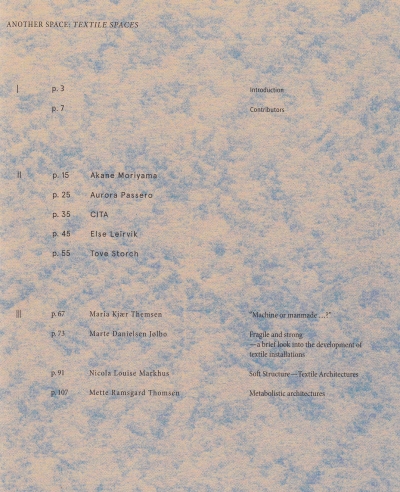
Another Space: Textile Spaces
Textile Spaces investigates the renewed interest for textile as spatial definer in art and architecture. Showing work by contemporary artists and architects, the exhibition presents sensitive approaches to using textile as a creator of space and artistic medium. Textile spaces actualizes textile’s poetic potential, emphasizes good craftsmanship and presents visions of other possible spaces.
Common for the exhibited artists and architects are their profound interest in the investigation of soft materials’ formal, structural and performative qualities. Aurora Passero weaves up her own canvases, dyes them and manipulates them spatially in combination with plaids and laces, creating installations that can be seen as a meeting point between painting and sculpture. Akane Moriyama implements textile as a functional and aesthetic spatial element, creating sensuous effects and suggesting a dissolving of traditional architectural solidity. Complexity in simplicity are keywords for Else Leirvik’s works, resulting from exploring what is sensuous and close to us, mobile and indeterminate. Tove Storch’s extensive work with silk indicate themes related to borders and surfaces, and how we relate to the art objects’ grade of reality and their presence in the given room. In their research, CITA - Center for Information Technology and Architecture, applies knowledge of the inherent properties of natural textiles and traditional crafting, finding new ways of implementing textile logic in architectural thinking and digital practice.
Together, the exhibition forms an insight into several approaches to using textiles in a spatial context, offering new understandings of soft materials and concrete proposals for their use and poetic potentials.











